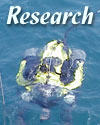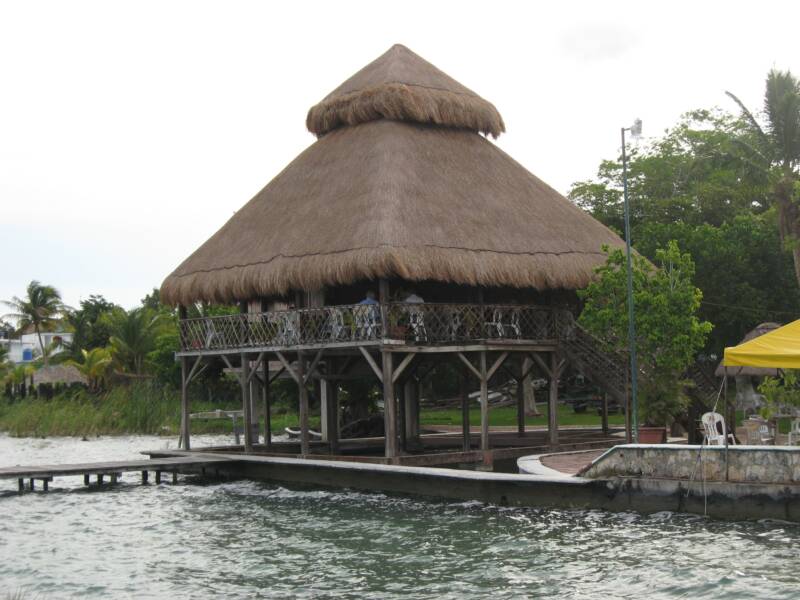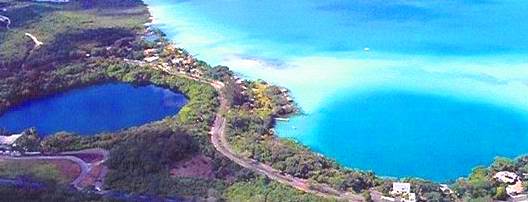
Dedicated to Conserving the Pristine Ecology of Laguna Bacalar Bacalar, Quintana Roo, Mexico

Laguna Bacalar Scientific Symposium
Thanks to all that participated to make the symposium a great success.
Held on January 9 - 10, 2009
Sponsored by
Great Lakes WATER Institute
Laguna Bacalar Institute
Symposium Location
The symposium will be held in Bacalar, Quintana Roo, Mexico located on the Yucatan Peninsula (please note that there are "other" Bacalars in Mexico so be sure you are booking the correct location). Bacalar is a small community of 12,000 that sits on the shores of Laguna Bacalar. The main highway is 307 that runs from Cancun to Chetumal (located on the Mexican/Belize border. See the "Travel page" for more information. Several regional maps are available on line.
The symposium meeting will be held at the Club de Vela (tentatively) located on Laguna Bacalar on the Costera (shore drive), by the Fort of San Felipe (and public square).
The presentations will be given at a beautiful palapa on the Laguna that accommodates up to 60 people. Lunch will also be served at the palapa.

An outside bar/pub area and recreational facilities are also available.
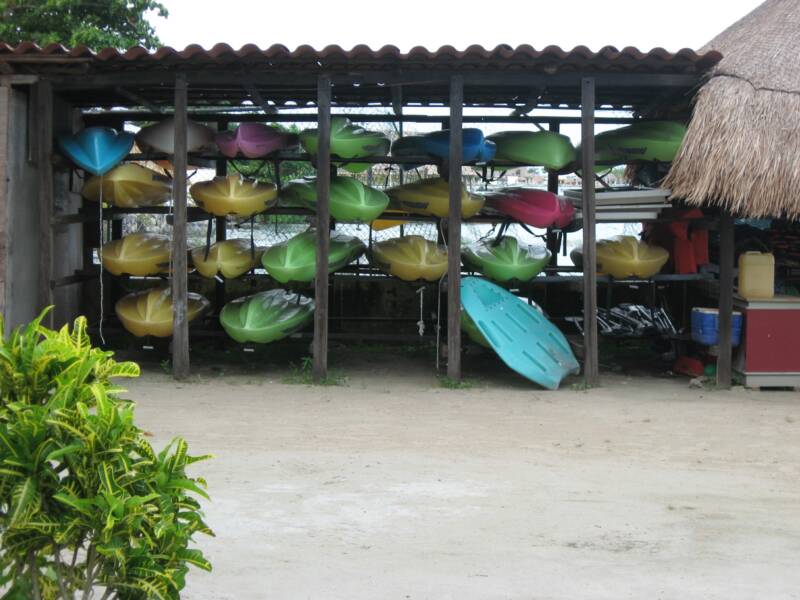
Visit the Club de Vela website

400 year old tree at Club de Vela
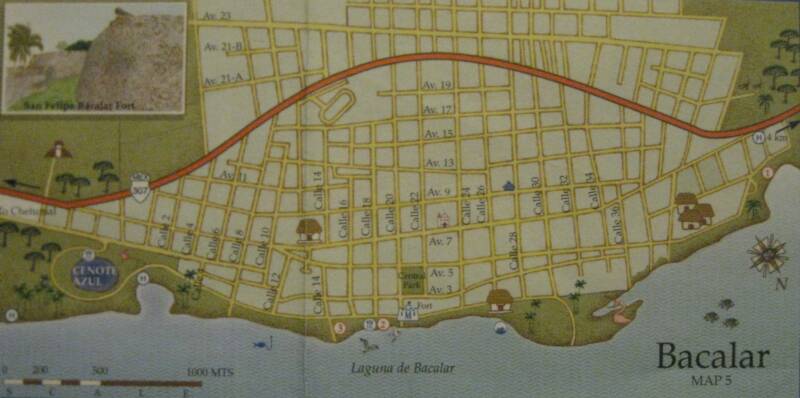
Hwy 307
Costera
(Shore Drive)
Cancun
Chetumal
Club de Vela, Symposium Location
El Sombrero Restaurant, Jan 8 Reception
City
Park
Fort
Cenote
Azul
Cenote Azul
Submarine Cenote
Use this link to access the proceedings of the symposium
About the Laguna
Laguna Bacalar is Mexico's World Class Lake
Few know of this 35 mile long freshwater lake, but Laguna Bacalar is Mexico’s 2nd largest natural lake and one of the world’s most unique lakes. The dense Yucatan jungle and distractions such as Cancun and the Caribbean coast have helped keep this secluded lake obscured. Laguna Bacalar, however, is a world class freshwater lake. In fact, put on the table photos of all world class lakes and choose one that is visibly unique-- virtually everyone will select Laguna Bacalar. This exercise directly translates the visible uniqueness of Laguna Bacalar into a unique ecology and biogeochemistry.
Laguna Bacalar has many characteristics of the Caribbean including sharing its beautiful hues of turquoise and blue, prompting the ancient Maya to name it "Laguna de Siete Colores" (Lake of Seven Colors). Several marine species have adapted to the Laguna’s freshwaters and also freshwater stromatolites, mangroves, and resident crocodilians. Submarine cenotes, karst sink holes analogous to those in the Niagara formation of the Great Lakes, are located both within the lake itself and on its adjacent shores. The most notable of these cenotes is believed to be up to 100 meters deep (some suspect much less) and has a rich cultural history--the Maya believed they were spiritual places.
The lake today is on the cusp of becoming one of the most threatened lakes in the world. Recently discovered by the tourism industry, construction of new accommodations is accelerating rapidly, yet there is no concomitant effort for environmental protection, e.g. there is no infrastructure for sewage treatment and efforts that produce change are slow. Mexican and some international scientists are well aware of the groundwater and sanitation problems of the Yucatan Peninsula and numerous groups are working to bring this to the attention of the world community.
Water clarity of this oligotrophic, nitrogen limited system is superb, however, the eutrophication potential as a result of increasing seepage, point and non-point discharges looms large. If the lake reaches its nutrient load thresholds a series of ensuing ecological/biogeochemical changes will likely occur. One scenario is the population explosion of a cousin of the zebra mussel (Dreissena polymorpha), the invasive black striped mussel (Mytilopsis sallei) that likely is the only worldwide example of an invasive dreissenid in ecological balance. This mussel is as ecologically lethal as the zebra mussel in upper North America. If enrichment of the Laguna advances, food web and nutrient cycling perturbations, the severe over-colonization by dressenids as seen elsewhere, and probably the destruction of the unique freshwater stromatolites may ensue.
Laguna Bacalar is not immune to human activities from the surrounding watershed. Current patterns of land use, especially the sewage effluent delivery to the lake via marginal septic disposal systems threatens the sustained ecology of the lake. As nutrient thresholds are reached, first near shore and eventually throughout the lake, Laguna Bacalar will undergo eutrophication processes that will remove the lake from its world class status. Reversal of the eutrophication process generally is impossible. Construction of a centralized Bacalar sewage system, and moreover for the Yucatan Peninsula will preserve the World Class status of Laguna Bacalar.
One of our immediate goals in Laguna Bacalar is to videograph the submarine cenotes and record data to determine directional flow related to the cenotes. Chemical and microbial data will also be collected.
Polly Gropen
Administrative Director
of the 2009 Laguna Bacalar Symposium
Luis Gonzalez-Dodd
Arrangements and Translator
for the 2009 Laguna Bacalar Symposium
Many thanks to Polly and Luis for their professional contributions that made the 2009 Symposium a great success.
River Kaster

